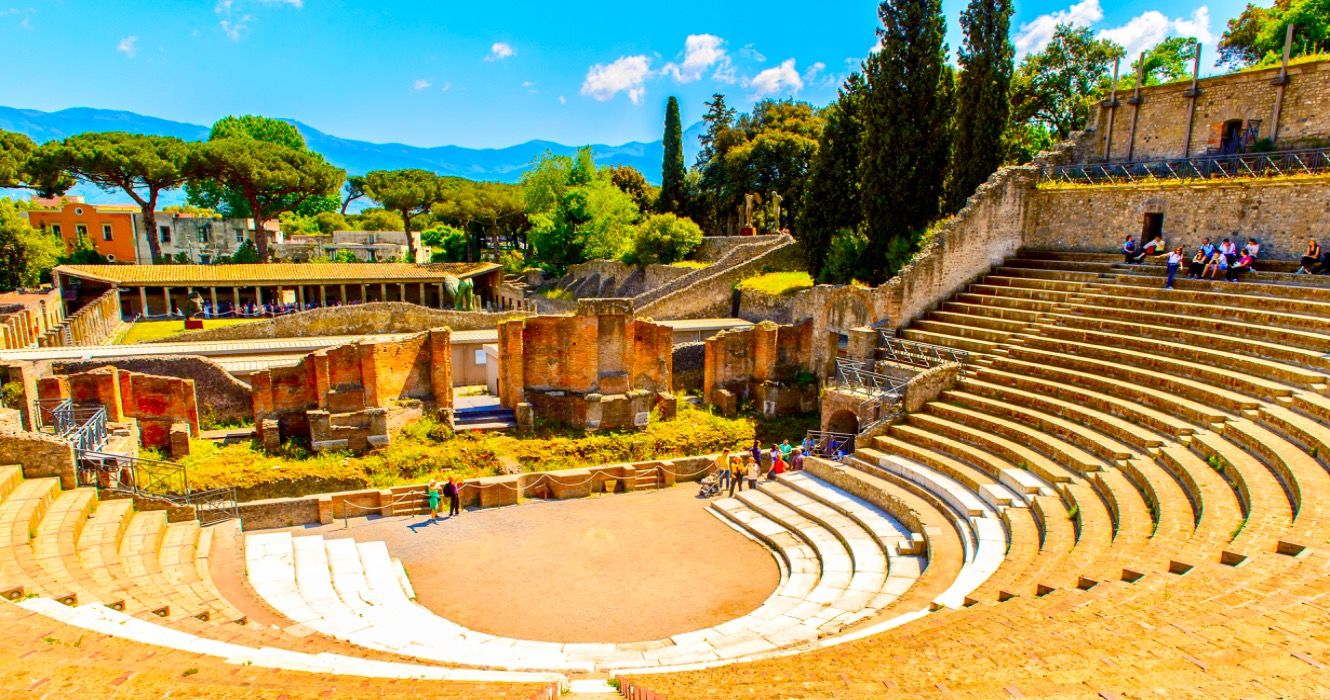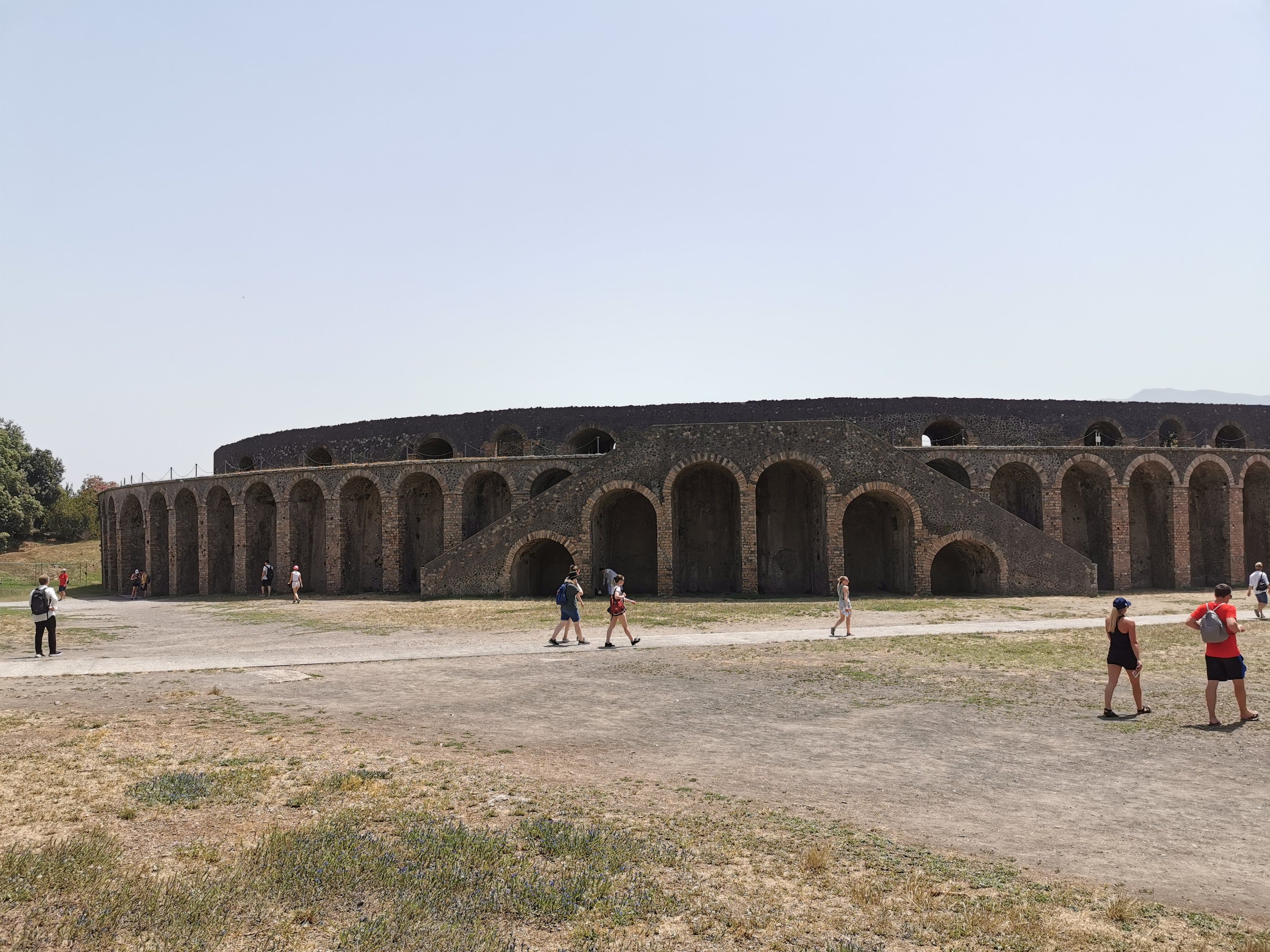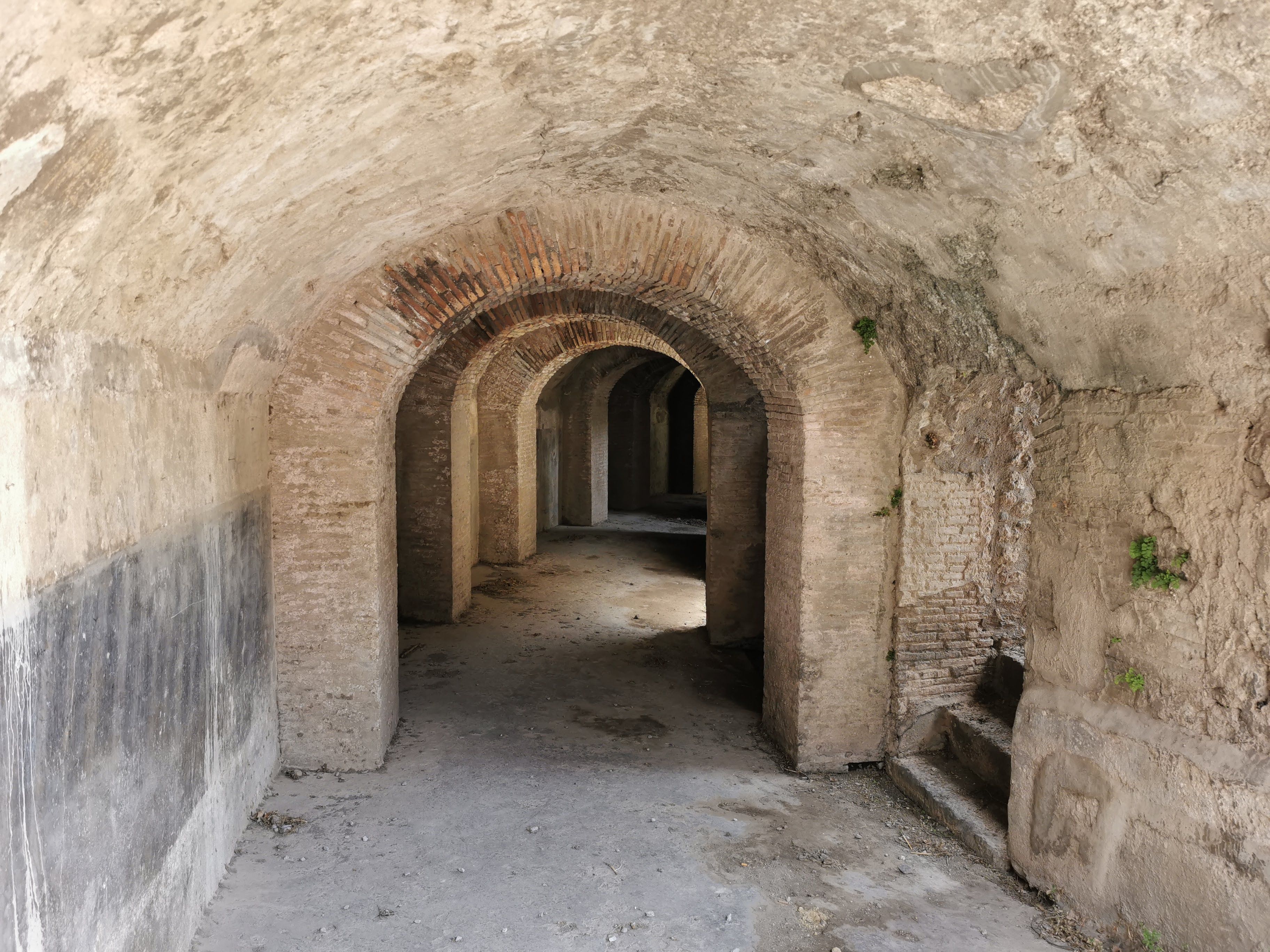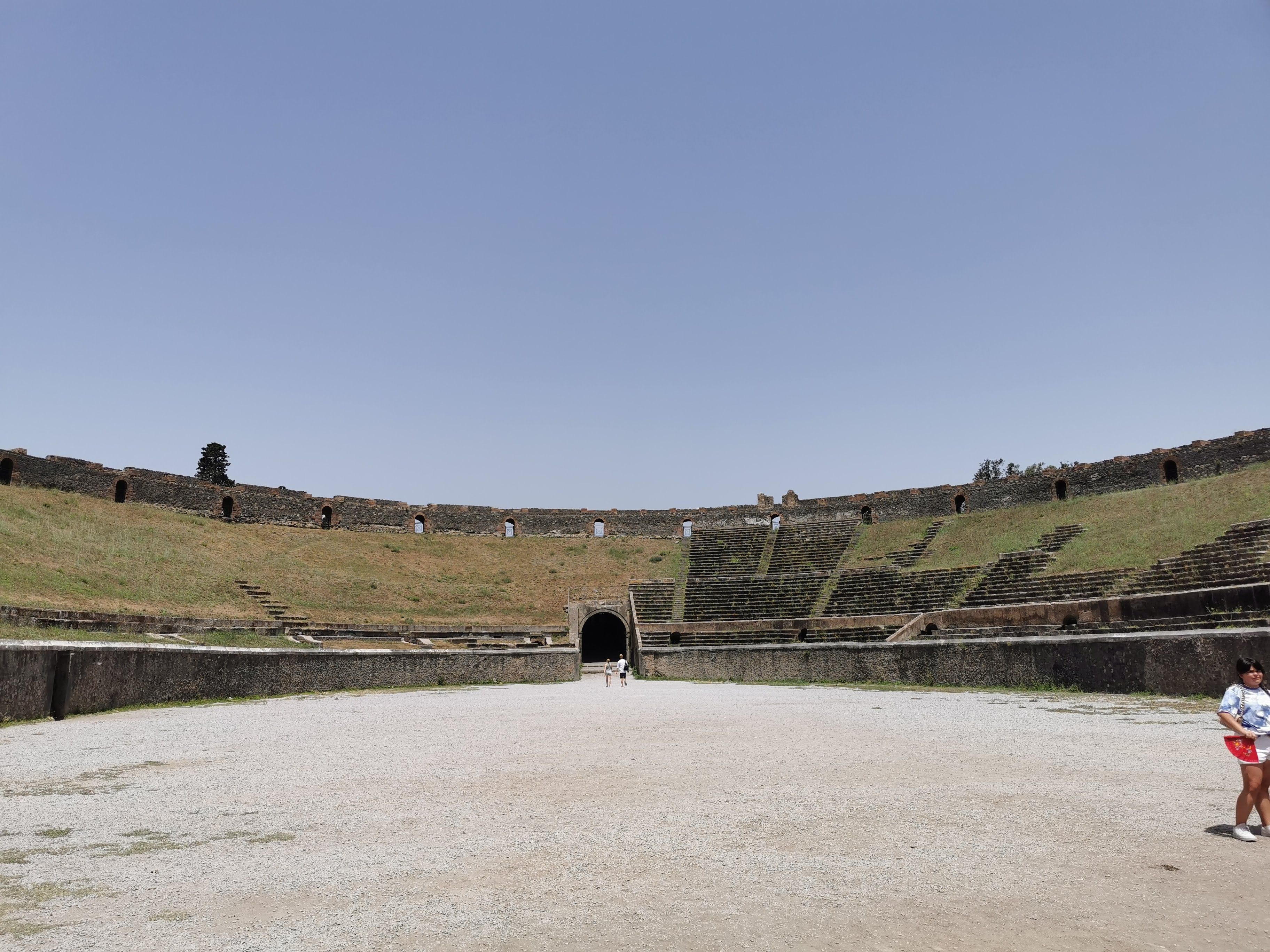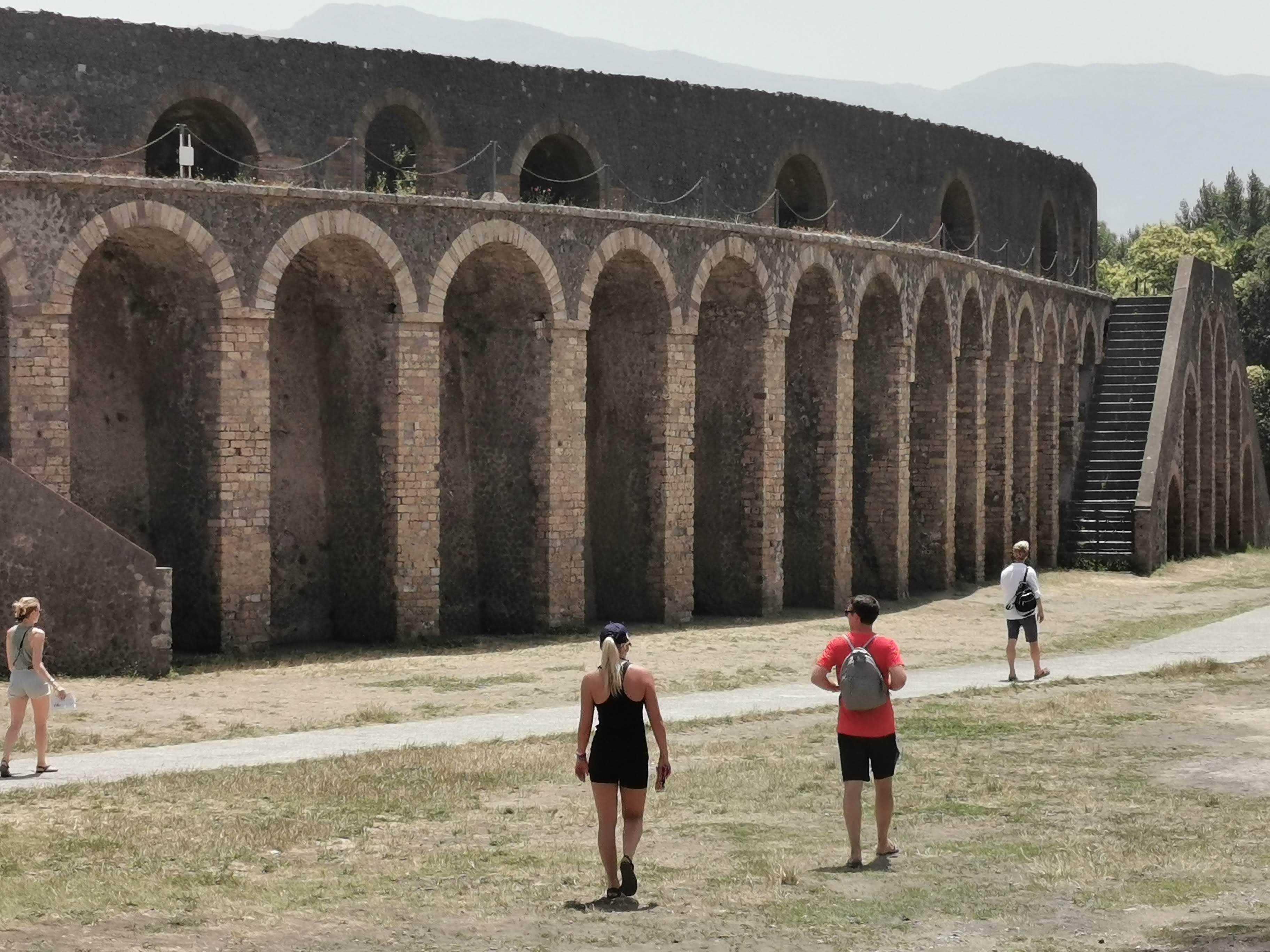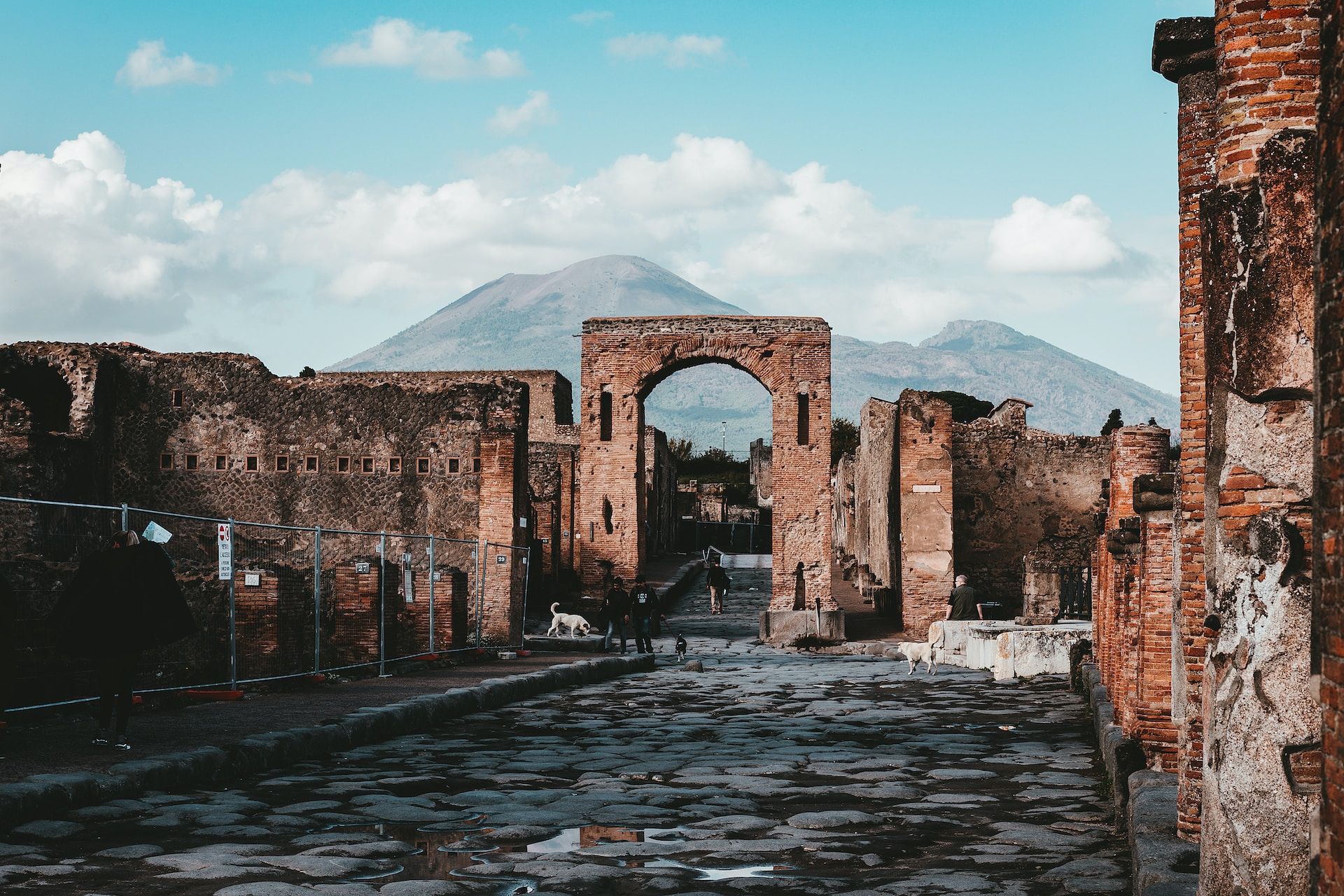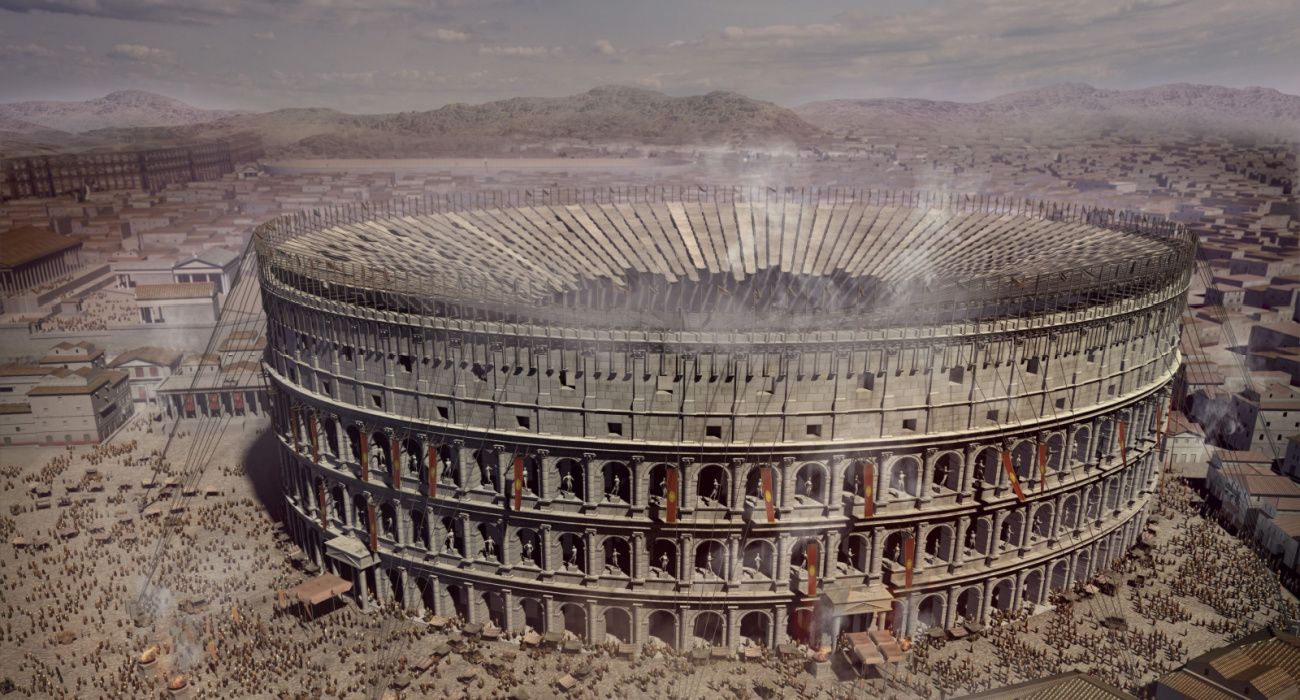Read update
- The Amphitheater Of Pompeii Was The Shape Of Things To Come
Summary
- Pompeii's amphitheater is believed to be the oldest permanent stone amphitheater in the Roman world, pre-dating Rome's first permanent theater.
- The amphitheater of Pompeii could hold up to 20,000 spectators and hosted various forms of entertainment, including gladiatorial games and blood sports.
- The eruption of Mount Vesuvius preserved Pompeii and its amphitheater, though the lower parts of the structure suffered damage. The amphitheater has since been partially restored.
Pompeii is a one-of-a-kind archeological site (together with associated archeological sites like Herculaneum). While there are other ash-buried cities in the world — like the ancient Mycenaean city of Akrotiri in the Greek islands — nothing matches the sheer size and scope of Pompeii. Thanks to Pompeii being catastrophically buried by Mount Vesuvius in 79 AD, the ancient Roman city is beautifully frozen in time and still being restored — even down to an ancient Roman snack bar!
One of the most eye-catching Roman monuments is the ancient Amphitheater of Pompeii. It is believed to be the oldest permanent stone amphitheater in the Roman world. Previously, these epic amphitheaters were built of wood, so the epic stone structure that remains is worth a visit to Pompeii.
UPDATE: 2023/1/05 16:47 EST BY AARON SPRAY
The Amphitheater Of Pompeii Was The Shape Of Things To Come
It seems that Pompeii had a permanent amphitheater before Rome, herself, got her first permanent theater. The Amphitheater of Pompeii heralded the shape of Roman entertainment to come. This article has been updated and expanded with more information about the development of ancient Roman amphitheaters.
The History Of The Amphitheater Of Pompeii (The Oldest Stone Amphitheater)
The Amphitheater of Pompeii was around 100 years old when it was covered by pyroclastic flows
The Amphitheater of Pompeii was 100 years old when it was buried by Vesuvius in 79 AD. It had been built around a century earlier, in 70 BC, just before the colony was founded.
For around 10 years of its history, the Amphitheater in Pompeii was closed after a bloody brawl in 59 AD (there is nothing new in today's soccer riots). The fight was between the residents of Pompeii and those of the nearby town of Nuceria. Emperor Nero responded by banning games at Pompeii for ten years.
- Built: After 70 BC
So what was the Pompeii Amphitheater used for? Throughout its time, the Amphitheater of Pompeii would have held all the circus shows, gladiatorial games, public executions, wild animal fights, and blood sports the Romans loved. Perhaps one can use one's imagination to still hear the shouts, screams, and cheering of the amphitheater still echoing off the walls.
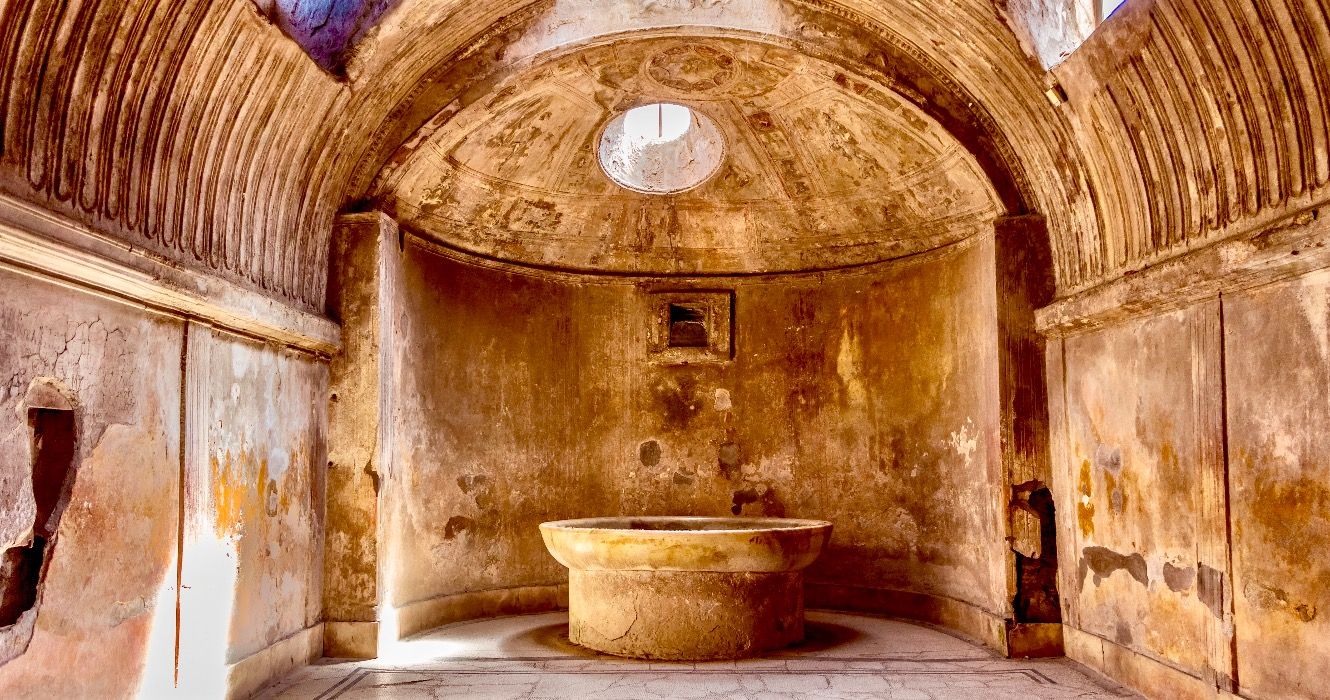
12 Great Sites To Explore While Visiting Pompeii
Pompeii is full of excellent points of interest, and the site is so massive most people will need a couple of days to see it.The amphitheater survived the cataclysmic eruption in 79 AD and was left mostly buried for the centuries that followed. It was dug out in 1823.
Much has been learned about the amphitheater in the excavations that followed, including that it was built at the private expense of Quinctius Valgus and Marcius Porcius. During excavations, six bodies were also discovered in the amphitheater.
The amphitheater has provided insights into the infamous gladiatorial culture of ancient Rome. There are painted posters on the walls of the amphitheater, along with slogans and nicknames of the gladiators.
Considering modern stadiums and modern posters, little has changed over the last 2,000 years. There is even one poster where the gladiator declares himself as the "Heart-throb of the girls."
The Size & Preservation Of The Amphitheater Of Pompeii
The Amphitheater of Pompeii is one of the city's largest monuments and is well-preserved
The Amphitheater of Pompeii could once hold up to 20,000 spectators who would have come in from the countryside around Pompeii as well as the city itself. In 2016, the amphitheater hosted its first public performance (a concert) since being buried.
- Capacity: Up to 20,000 Spectators
- Size: 445 by 341 feet or 136 by 104 meters
- Arena (pit): 67 meters by 35 meters (& set 6 meters below ground level)
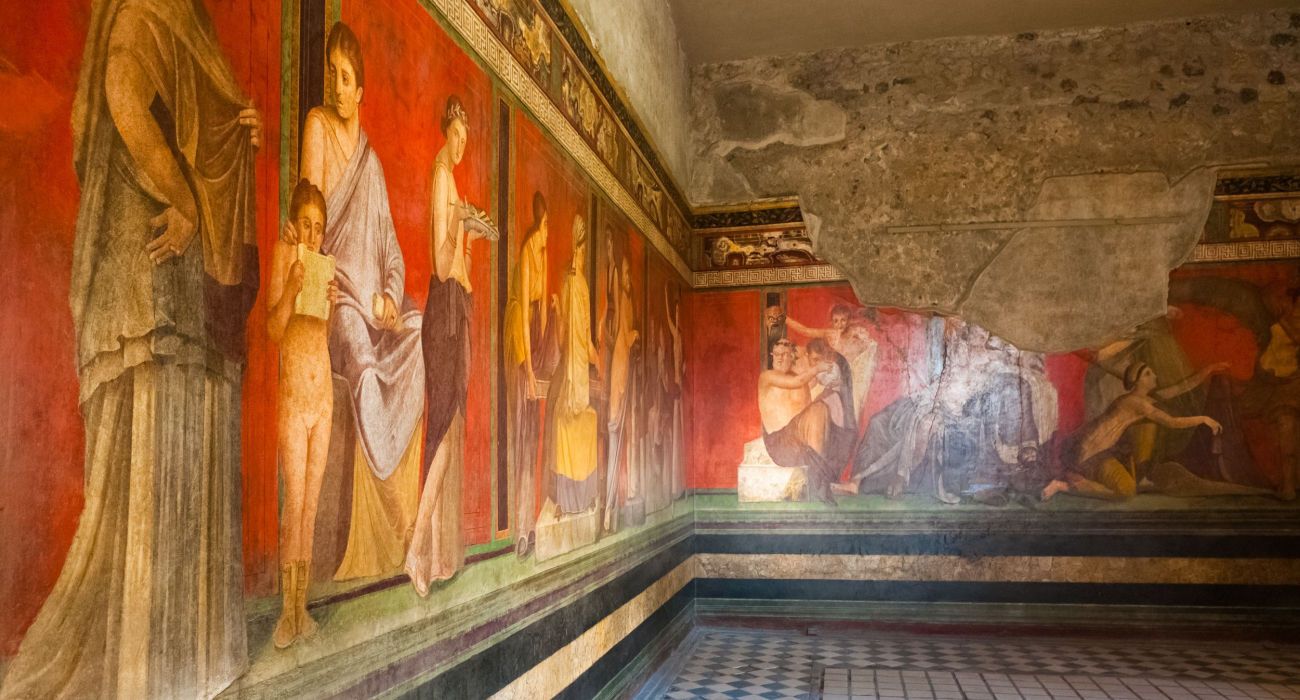
Villa Of The Mysteries: What To Know About One Of The Best-Preserved Roman Villas Of Pompeii
The Villa of the Mysteries is one of the top attractions at Pompeii and preserves some of the best ancient Roman art around today.What To Know About The Amphitheater Of Pompeii Today & Visiting Pompeii
The Amphitheater of Pompeii is one of the top attractions in Pompeii today
Today, the Amphitheater of Pompeii is one of the oldest surviving Roman amphitheaters and perhaps the oldest constructed out of stone. The archeological site of Pompeii is massive, and the amphitheater is located in an area far from the main entrance, so many people are already tired and in need of coffee by the time they reach that part of the archeological site.
It is easy to get overwhelmed by the sheer number of places to explore in Pompeii. It may be better to explore the site over a couple of days and concentrate on a certain segment at a time. Avoid the height of summer, as the summer temperatures can get oppressively hot.
Few archeological sites are as impressive as Pompeii, and everyone should visit. The preserved historic sites are the main reasons Pompeii is worth visiting. It is located just a short drive out of the modern Italian city of Naples.
Visitors can enjoy both a self-guided or guided tour of the site. It is better to get a guided tour to gain a better understanding of the city and ruins. There are countless hidden gems all around the city that experienced tour guides can point out.
Pompeii Archeological Site Hours & Entry Price
- Opening Times: 9.00 am to 7.00 pm (last entrance at 5.30 pm)
- Entrance Fee: 18 Euro (about $20)
Take the time to discover the many villas and brothels of Pompeii, some with their images still plainly visible.
Access to the Amphitheater of Pompeii is included on a standard access ticket to the Pompeii archeological site. Everyone can enter the ancient amphitheater and explore the impressive structure and its halls and passageways.
The seating of the arena has largely not been restored and is largely grass-covered today.
What Happened To Pompeii? How Did The Amphitheater Survive The Eruption?
Instead of destroying Pompeii and the Amphitheater, the eruption of Vesuvius preserved them
- Pompeii experienced a devastating volcanic eruption in the summer of A.D. 79.
- As many as 2,000 people of the 10,000-20,000 living there died.
- The Amphitheater suffered damage from the volcano, with mainly its lower parts being the most affected.
In the summer of 79 AD, Mount Vesuvius, a volcano near Pompeii, erupted, killing thousands of residents and destroying much of the city. This was a total shock to the people living in ancient Pompeii, as there weren't ways to tell when this would happen: it just did.
The Amphitheater sustained heavy damage from the volcanic ash, being almost covered in it. However, the top sections of this famous landmark were able to survive the explosion, helping people locate it. Over the years, the Amphitheater of Pompeii has been somewhat restored, but it still sits as a testament to the horrifying event.
According to historians, the uppermost sections of the Amphitheater remained partially exposed up until the Middle Ages, with the holes for the crowd-shading awnings known as velaria partially eroded.
How The Pompeii Amphitheater Heralded The Future Of Roman Theaters
Permanent stone amphitheaters seem to have been quite rare in the empire when the Amphitheater was first built
The Romans are famous for their massive amphitheaters, but the largest amphitheaters for which the Roman Empire is famous (e.g. the Colosseum and the Arles Amphitheater) were built during the Imperial era.
Few amphitheaters date from the Republican times. Most of the famous Roman amphitheaters were built in the first century AD in the early Imperial era.
Amphitheaters should not be confused with theaters (which are not fully enclosed) and circuses and hippodromes, which were more elongated and built for racing events.
- Number Of Roman Amphitheaters: Over 230 known
- Earliest Amphitheater In Rome: Temporary wooden amphitheaters at the Roman Forum in the 2nd Century BC
- Earliest Permanent Theater In Rome: Theater of Pompey (Completed 55 BC)
There are around 230 known Roman amphitheaters found across the Roman Empire from England to Egypt. The earliest amphitheaters date from the republican times, but they really took off during the Imperial era. The Colosseum (built in the 70s and 80s AD) was unparalleled for its size and complexity (plus it remains the largest ancient amphitheater ever built).
Those who watched the (excellent) HBO TV series Rome may note the lack of theaters and amphitheaters depicted in the series. While one of the reasons for that may be the cost of stage construction, another reason may be the lack of amphitheaters during the period (the series runs from 52 BC to 30 BC).
Pompey the Great (one of the key characters in the series) was the first to construct the first permanent theater in Rome called the Theater of Pompey (completed in 55 BC). Just a few years before the chronological start of the series, there were no permanent theaters in Rome.
The strange takeaway from this (if these dates are correct) is that Pompeii had a permanent amphitheater (completed 70 BC) before Rome had its first permanent theater (completed 55 BC).

